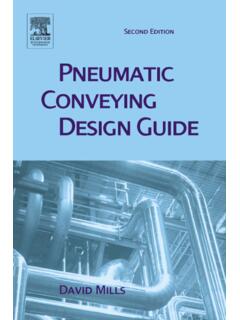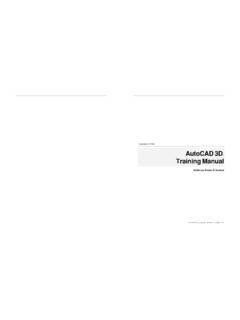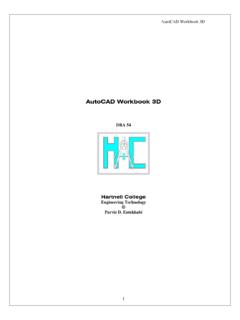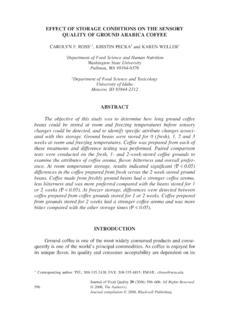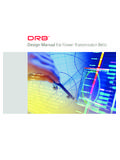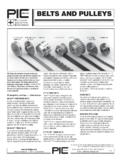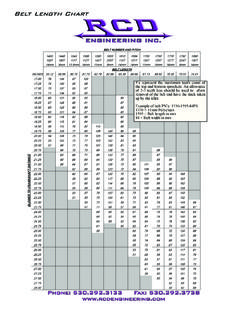Transcription of CONVEYOR HANDBOOK - Website cá nhân giáo …
1 CONVEYOR HANDBOOK UPDATE June 2009 A member of Foreword This CONVEYOR HANDBOOK is provided by FENNER DUNLOP to allow designers to select the correct specification belting for any particular installation Properties of fabrics used in Polyester Nylon multi-ply belting constructions are given in detail, while the general properties and application areas of special multi-ply constructions are also shown. Solid woven and steel cord belting are described in detail in separate sections. The use of various natural and synthetic rubbers with these reinforcements for handling different service conditions is set out for the designer.
2 Design considerations affecting power demands, belt curves, transitions etc., are provided. The layout of this manual and its easy approach to belt design will be readily followed by belt design engineers. Should problems arise, the services of FENNER DUNLOP are always available to help with any problems in the design, application or operation of CONVEYOR belts. Index 1. Materials of construction Reinforcements .. 1 - 1 General Properties .. 1 - 3 2. belt Capacities Capacity Calculations .. 2 - 1 Properties of Materials .. 2 - 2 3. belt Power and Tensions belt Power Calculations Formulae .. 3 - 1 Calculation of Maximum Tensions.
3 3 - 5 Graduated Idler Spacings .. 3 - 7 Feeder belt Calculations .. 3 - 9 Acceleration and Deceleration .. 3 - 10 Application of Forces .. 3 - 14 Algebraic Signs of CONVEYOR Forces .. 3 - 15 Coasting .. 3 - 16 Check List for Large CONVEYOR Systems .. 3 - 17 4. belt Carcass Selection belt Construction Requirements .. 4 - 1 Considerations .. 4 - 1 Procedure .. 4 - 2 5. Cover Gauges and Qualities 5 - 1 5 - 1 Pulley side 5 - 1 6. Pulley Diameters Parallel face 6 - 1 Crown face 6 - 2 Pulley face 6 - 2 7. Design Considerations Multiple Slope and Vertical Curve Conveyors .. 7 - 1 Terminal Troughing Idler Arrangements .. 7 - 4 Transitions .. 7 - 4 Take - Up Arrangements.
4 7 - 5 8. General Data belt Mass and 8 - 1 Shipping dimensions and roll 8 - 1 Length of belt on a 8 - 2 belt transport 8 - 3 9. Solid Woven Belting belt 9 - 1 belt and cover 9 - 2 Operating temperature 9 - 3 Operating factor of 9 - 3 9 - 2 10. Steel Cord Belting belt 10 - 1 Operating 10 - 2 belt covers .. 10 - 5 belt protection .. 10 - 5 Splicing .. 10 - 6 1. Materials of construction Reinforcements .. 1 1 General Properties .. 1 3 Table 1 Reinforcement Fabrics .. 1 2 Table 2A Cover Compounds .. 1 4 Table 2B Heat Resistant Belts .. 1 5 Table 2C Oil & Chemical Resistant .. 1 6 Table 2D Fire Resistant & Anti Static Belts.
5 1 71. Materials of construction The composition of a CONVEYOR belt can be considered in two parts: A. The Carcass, whether ply type (textile) or steel cord construction, which must have sufficient strength to handle the operating tensions and to support the load. B. The Covers, which must have the required physical properties and chemical resistance to protect the carcass and give the CONVEYOR belt an economical life span. The general properties and the application usage of the more economical available reinforcement fabrics and rubber compounds are discussed in this section. REINFORCEMENTS Fabrics Fabrics that are commonly used as reinforcement in CONVEYOR belts are shown in Table 1 of this section The fabric designation indicates the material used in both warp and weft, PN signifies that the fabric has Polyester warp fibres and Nylon weft fibres.
6 The ultimate strength of the belt in kilonewtons per metre width is shown along with the number of plies. PN1000/4 designates a belt with four plies of polyester warp, nylon weft fabric and an ultimate full- belt tensile strength of 1000kN/m. Alternatively the belt can be often described as 4 ply PN250 where the strength of the individual plies is shown. The allowable working tensions allocated are shown in tables 1 and 2 in section - 1 TABLE 1. REINFORCEMENT FABRICS CARCASS MATERIALS STRENGTH RANGE CARCASS TYPE WARP (longitudinal) WEFT (transverse) kilonewtons per metre width FEATURES AND APPLICATIONS PN plain weave (DIN code EP) Polyester Nylon 315 to 2000 kN/m (150 to 400 kN/m/ply) Low elongation.
7 Very good impact resistance Good fastener holding An excellent general purpose fabric. PN crow's foot weave Polyester Nylon 630 to 2500 kN/m (315 to 500 kN/m/ply) Low elongation Good impact resistance Very good fastener holding. Excellent rip resistance. For high abuse installations PN double weave Polyester Nylon 900 & 1350 kN/m (450 kN/m/ply) Low elongation. Excellent impact resistance. Excellent fastener holding. For high abuse installations. PP Plain weave Polyester Polyester Up to 900 kN/m (120 & 150 kN/m/ply) Used in special applications where acid resistance is needed. Contact us for information. NN Plain weave Nylon Nylon Up to 2000 kN/m (150 to 450 kN/m/ply) High elongation, mostly replaced by polyester-nylon.
8 Used in special applications where low modulus needed or in high pH environment CC Plain weave Cotton Cotton Up to 400 kN/m (65 & 70 kN/m/ply) Used in special applications such as plasterboard belting and hot pellet handling. SW Solid woven Nylon/cotton or Polyester/cotton Nylon/cotton 600 to 1800kN/m Main use in underground coal mining. Good fastener holding and impact resistance. Used for bucket elevators. ST Steel cord Steel cord None (special reinforcement available) 500 to 7000 kN/m Very low elongation and high strength Used for long haul and high-tension applications. AN Aramid nylon (Kevlar) Polyaramide Nylon 630 to 2000 kN/m Low elongation, high strength, low-weight.
9 Used on high-tension applications and on equipment conveyors. PN belting comprises the vast majority of plied fabric belting in service and is referred to throughout this HANDBOOK . For information advice on other belting types consult FENNER DUNLOP. 1 - 2 1 - 3 GENERAL PROPERTIES OF belt COVERS AND GRADES The following tables give a comparison of general characteristics of polymers used in belting compounds. Special compounding can result in substantial changes to these general polymer properties. Generally CONVEYOR belts are supplied with electrical resistance in the anti-static range and should not be used for electrical insulation. Special non-conductive grades are available on request.
10 There are four separate tables: Belts for Mining, Quarrying and General Service Heat Resistant belts Oil and Chemical Resistant grades Fire Resistant and Anti-static belts Notes referred to in these tables are: 1. Available with extended ozone resistance capabilities on special request. 2. The low temperature performance figures given in the table are representative of general purpose compounds in each classification. Belts for operation at lower temperatures than those given are available on request. 3. The high temperature performance figures given in the table are representative of situations where the belt is subject to relatively long exposures of blanketing heat.
